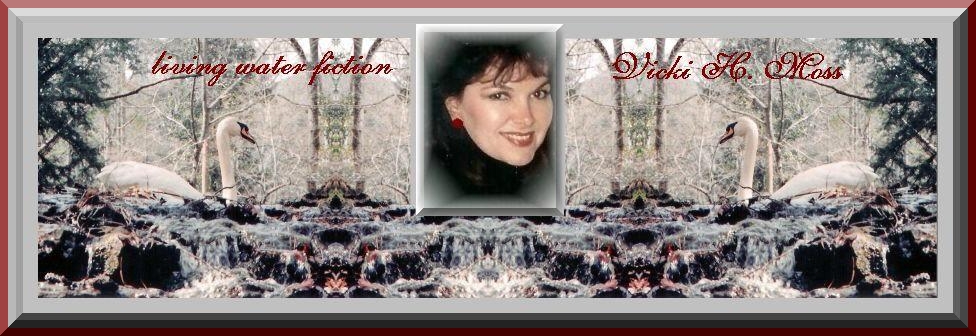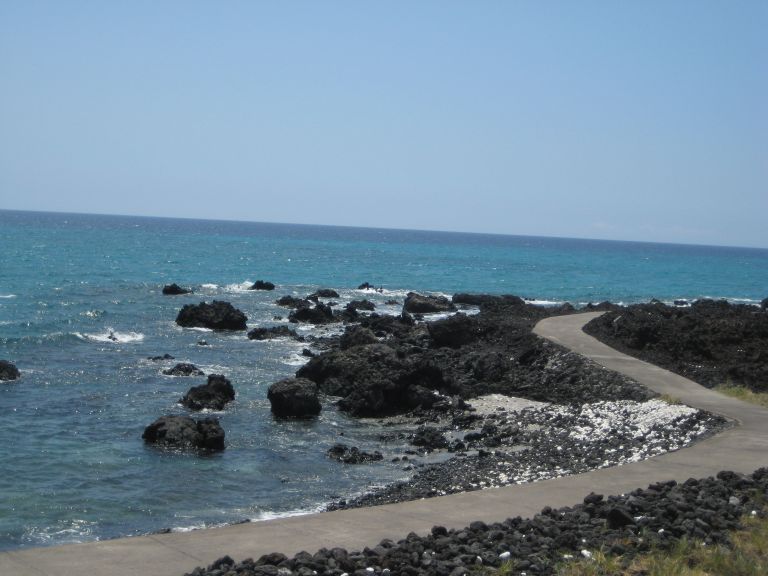
~ Vicki's Blog Archive ~
-- Welcome -- About Me -- Fiction -- Non-Fiction -- Poetry -- Inspirational -- Young Adult -- Kids -- Awards --
-- View -- Memoir -- My Garden -- Flowers -- Tea Time -- Photos -- Faq -- Blog -- Store -- Links --

Posted July 8, 2009
SALT SCOOP

photography by Peyton Moss
I never thought the black volcanic rock lava beaches of Hawaii attractive. Different, but not pretty. If I had my choice, I'd rather go to the Gulf of Mexico beaches or beaches in the Caribbean where the sand is fluffy and white.
However, out of a sow's ear, one can always make a silk purse, or at least something useful.
I was surprised to discover that there was a Pacific sea salt from Hawaii that combines a hearty crunch with high-quality, activated charcoal - a natural anti-toxin and digestive aid. (And we were always cautioned as kids not to teeth on Dad's grilling coals!) It's supposed to be good on veggies, potato dishes, roasts of any kind, and whatever is thrown on the grill for barbeque.
There's also a Peruvian Pink Salt that comes from an ancient Ocean, trapped underground. It feeds a spring located 10,000 feet high in the Andes Mountains in Maras, Peru. In the Sacred Valley of the Incas, warm spring water seeps into terraced ponds that have been hand-harvested for over 2,000 years.
This made me yearn for spelunking gear.

Natural salts have been around forever. While in a new environment and trying to survive, man could always follow the animal trails to salt licks.
In 1910, Morton began white table salt production with the
photography by Peyton Moss
addition of anti-caking agents.
The formation of a salt crystal can be compared to the making of a snowflake. The texture and design of each flake is different, just like the cook's application of the salt to food.
Salt was expensive and important in olden times. The Middle Eastern ancients made promises and covenant vows by mixing salt from one man's salt pouch to another's. The only way a promise could be broken was to find the original salt flakes and return it to the original pouch.
In Leviticus 2:13, God's instructions to the Israelites for the grain offering was this: "Season all your grain offerings with salt. Do not leave the salt of the covenant of your God out of your grain offerings; add salt to all your offerings."
Salt was a preservative then, as it is now.
Then again, the "Salt Covenant" was mentioned in Numbers 18:19. When God gave instructions for the offerings of the Israelite priests and Levites, He said, "Whatever is set aside from the holy offerings the Israelites present to the Lord, I give to you and your sons and daughters as your regular share. It is an everlasting covenant of salt before the Lord for both you and your offspring."
I suppose a salt covenant could have been broken if a Peruvian with pink salt made a vow with a Hawaiian exchanging black salt and they had "a falling out." However, salt flakes or grains are so small, it would have been a daunting task to separate them.
Salt covenants encouraged promise keeping!
To learn more about salt, check out the Salty Dog's blog where great recipes can be found.
P.S. - Black salt would look great on Rebecca J's tomato pie! Check out my July 3rd blog to find out what I'm talking about.
-- Welcome -- About Me -- Fiction -- Non-Fiction -- Poetry -- Inspirational -- Young Adult -- Kids -- Awards --
-- View -- Memoir -- My Garden -- Flowers -- Tea Time -- Photos -- Faq -- Blog -- Store -- Links --
Contact Information
Email to....:vmoss@livingwaterfiction.com